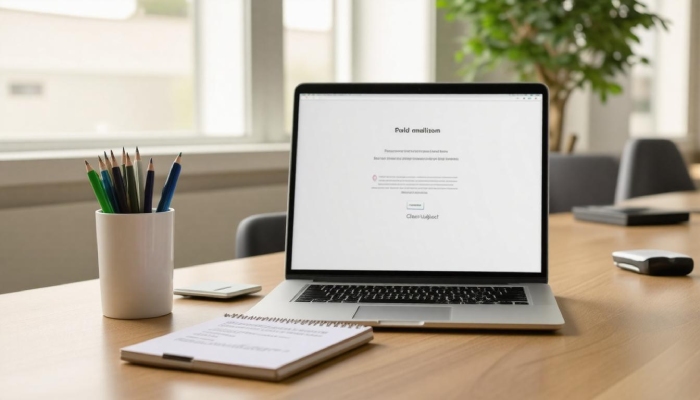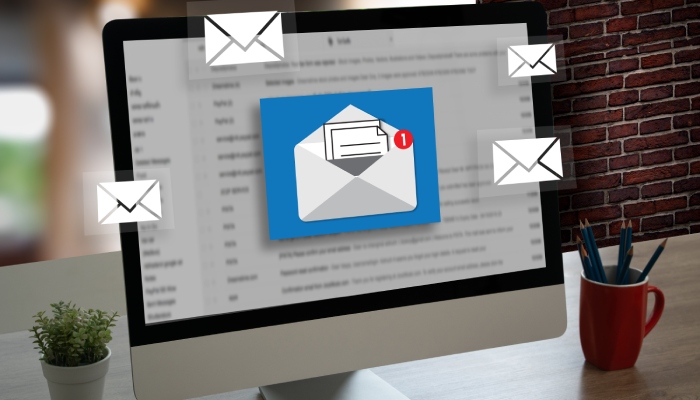Cold Email Strategies: Tips for Effective Outreach
In a world where inboxes are overflowing and attention spans are dwindling, cold emailing can feel like sending messages into the void. Yet, despite the challenges, it’s still a powerful tool for connecting with potential clients and partners. But how do you cut through the noise and ensure your outreach is both noticed and responded to? Spoiler alert: the magic lies in personalization and authenticity. By genuinely understanding your recipient’s needs and crafting thoughtful messages tailored just for them, you can transform cold outreach into warm conversations. Let’s dive deeper into effective strategies that will not only get your emails opened but also spark meaningful engagement.
Cold email is a strategy used primarily for B2B outreach, involving unsolicited emails sent to potential clients to introduce a business and its services without prior contact. To use cold email effectively, it is essential to personalize your messages, address the recipient’s pain points, and incorporate clear calls-to-action to encourage engagement.

What is a Cold Email?
A cold email is an unsolicited email, reaching out to someone without any prior contact. Think of it as the digital equivalent of introducing yourself at a networking event, except there’s no handshake or face-to-face interaction. The primary goal isn’t just to sell something outright; it’s to spark a conversation that could lead to business opportunities—whether that’s setting up a meeting, cultivating a new relationship, or grabbing the interest of a potential client.
While the concept may seem straightforward, crafting an effective cold email is anything but simple. One key characteristic that separates cold emails from mere spam is their personalized touch. Unlike generic messages that blast recipients with sales pitches, well-executed cold emails are tailored to address specific pain points or interests of the recipient. This personalization significantly increases the chances of receiving a response. In fact, studies have shown that personalization can boost response rates by up to 50%.
According to a 2023 study, around 78% of cold emails are ignored. Hence, standing out with thoughtful communication is imperative.
Another crucial element related to cold emailing is email deliverability, which measures how many emails actually make it to the recipient’s primary inbox instead of getting lost in spam filters. It’s estimated that only about 15-28% of cold emails get opened, depending on industry standards. This statistic highlights just how important it is to follow best practices when crafting your message—everything from subject lines to sender reputation plays a role in whether your email gets seen.
When creating your outreach strategy, consider these compelling statistics: successful cold emails incorporate relevant subject lines that can improve open rates by 20-30%. These numbers reflect what happens when you craft your outreach message as thoughtfully as if you were speaking directly to someone.
While some might think of cold emailing solely in terms of sending out pitches for products or services, its potential use cases extend far beyond traditional sales efforts. For instance, businesses can use cold emails to connect with influencers for partnership opportunities or reach out for feedback on their services. Marketers might utilize this technique as part of their lead nurturing process, moving prospects through the sales funnel by offering valuable content and insights.
Use Case Examples
Consider a software company reaching out to small businesses that could benefit from an innovative app they’ve developed. Instead of making a hard-sell pitch about features and pricing, the email could focus on addressing specific challenges these businesses face daily and how their product might alleviate those problems.
Crafting such personalized messages helps create genuine dialogue rather than simply pushing a sale. By focusing on building relationships rather than transactional interactions, companies can cultivate trust and ultimately drive more significant engagement with their target audience.
With this understanding of what defines an effective cold email, we can explore how fine-tuning elements like messaging and connection can significantly enhance outreach impact.
The Role of Personalization

Personalization is more than just a name at the top of an email. It represents a tailored approach that makes each recipient feel like the message was crafted specifically for them, rather than being part of a mass outreach campaign. Research highlights that consumers are 80% more likely to engage with brands that provide personalized experiences. This means if you want your cold emails to stand out, diving deep into personalization techniques is essential.
Studies show personalized emails can lead to significant engagement improvements; in fact, they boast a 14% increase in click-through rates and a 10% bump in conversions. Not only does personalization enhance open rates, but it also establishes an initial connection—a key factor in building trust with potential clients who may feel skeptical about unsolicited outreach.
A highly effective technique for personalization is to incorporate specific details that highlight your understanding of the recipient’s context. For instance, instead of starting with a standard “Dear Customer,” try something more engaging like “Hi Jane, I noticed your company, XYZ, has been expanding its tech team…” This immediate recognition not only demonstrates your attention to detail but also positions you as someone likely interested in their business growth.
What’s remarkable is how even small tweaks can lead to significant responses. When recipients see elements that resonate with their experiences or achievements, they’re far more likely to open up a conversation.
Personalization doesn’t stop at addressing someone by name or mentioning their company. Dive deeper by referencing recent activities—awards won or new product launches, for example. Recognizing these milestones in your email communicates not only your attentiveness but also your genuine interest in what they have achieved.
When crafting these messages, consider adding emotional triggers as well; the right combination of acknowledgment and encouragement can stir reactions that drive responses. Whether it’s expressing admiration for a successful initiative they’ve undertaken or showing excitement over their latest product launch, this conversational touch can create a rapport that fosters further dialogue.
Emphasizing these personal connections transforms cold outreach into warm conversations—where both parties are eager to explore potential collaboration and mutual benefits. With these foundational elements established, let’s turn our focus towards another key aspect of outreach: creating compelling subject lines that capture attention effectively.
Crafting Effective Subject Lines

The subject line serves as the gateway to your message—it’s essentially your first impression. It’s the moment to make a connection, and yet, it’s often hastily constructed or entirely neglected. This oversight can be detrimental. Research indicates that nearly 47% of email recipients decide whether or not to open an email solely based on the subject line. Therefore, it’s crucial to incorporate key elements.
Key Elements of a Great Subject Line
- Relevance: For effective cold outreach, ensure your subject line resonates with the recipient’s specific needs or interests. For example, “Discover Strategies to Streamline Your Workflow” directly addresses business improvement, enticing the reader.
- Curiosity: Tapping into curiosity can coax the recipient into wanting to learn more. Think along the lines of “What Successful CEOs Do Differently”. This kind of question fuels interest without falling into the trap of being deceptive.
- Urgency: Creating a sense of urgency can convince recipients to prioritize your email over others. Yet, this is a tightrope walk—phrases like “Limited Time Offer: Enhance Your Efficiency Today!” evoke action without coming off as spammy.
Keep in mind that using numbers in a subject line significantly boosts open rates—by as much as 36%. So don’t shy away from including statistics or tangible figures when applicable.
A study showed companies leveraging personalized subject lines like those tailored specifically for businesses can see up to a 25% increase in open rates. This illustrates the power of personalization and its effectiveness in connecting with potential clients on deeper levels.
As you refine your approach to creating subject lines, remember that experimentation will illuminate what resonates most with your audience. Understanding your recipients’ desires will guide you toward more compelling messages that truly engage them.
Writing Compelling Messages

At the core of effective cold emailing lies the ability to create compelling messages. Your goal is to draw the reader in immediately and keep their attention until you’ve delivered your value proposition and encouraged them to take action. A well-structured email can transform a fleeting glance into genuine interest.
Structure of a Great Cold Email
When it comes to structure, simplicity is key. Aim for an ideal length of 50-125 words. This brevity helps maintain the reader’s attention while delivering all necessary information.
- Opening Line: Begin with a personalized opening line that resonates with the recipient. For example, saying something like, “Hi John, I noticed you’ve been exploring new ways to optimize your sales process…” shows that you’ve done your homework and adds a touch of warmth which can break down barriers.
- Value Proposition: Following this, your value proposition must be crystal clear—explain what you offer succinctly and how it benefits them. Phrasing like, “Our tool has helped companies like yours boost sales efficiency by 30% within the first three months,” provides concrete evidence of your offering’s effectiveness. It transforms vague claims into relatable metrics.
Research reinforces that emails concluding with specific calls to action can increase response rates significantly. In fact, those ending with clear instructions such as “Would you be open to a 15-minute call next week to explore this further?” result in up to a 20% higher chance of receiving a reply.
However, crafting your email requires more than just filling in these sections; engagement hinges on genuine communication. Incorporation of relevant details specific to the person or business ensures recipients feel valued and understood. For example, referencing recent achievements or challenges they’ve faced establishes common ground and signals that you are reaching out purposefully. Whether you’re sending from a personal address or through a platform like Nureply, personalization remains key to making a meaningful connection.
Furthermore, emotional triggers play an invaluable role in eliciting responses; including thought-provoking questions can elevate engagement even further. When you ask engaging questions directly related to their needs—“What are your current challenges in enhancing sales efficiency?”—it not only shows interest but also invites conversation.
By applying these principles within the framework of personalization and relevance, you position yourself as more than just another cold email sender. Instead, you become a potential partner in their endeavors—a concept that resonates well given the competitive landscape many businesses navigate today.
With these strategies at hand, you’ll be prepared to advance towards improving interaction rates through effective outreach techniques that ensure your emails don’t just land but truly resonate with their intended audience.
Boosting Open and Response Rates

When it comes to cold emailing, hitting that sweet spot of engaging the recipient right away can sometimes feel like searching for a needle in a haystack. Yet, knowing some key tactics can substantially improve your chances of a successful connection. Besides optimal timing, which is vital, you also have to recognize how follow-up emails act as critical reinforcement in your outreach strategy.
Optimal Timing
First off, let’s talk about timing. Research shows that sending emails between 10 AM and 11 AM on weekdays tends to garner higher open rates. This is likely because many professionals settle into their workdays during this hour, opening their inboxes out of habit while navigating their morning tasks.
However, consider your audience’s specific habits; if you know they tend to check emails at different times, adjust accordingly. Testing various sending times using A/B testing can provide insight into when your particular recipients are most engaged.
Once you’ve mastered the timing, the next crucial element is following up.
Follow-Ups
It often surprises people to learn that sending a follow-up email just two days after your initial one can elevate your response rates by an impressive 22%. Gently nudging someone after giving them a moment to process your previous message can be quite effective. Think of it as planting seeds—sometimes those seeds need a little extra watering (or in this case, reminding) before they start to sprout.
According to data from Yesware, with each follow-up up to the sixth one, there’s a likelihood of increasing your chances of getting a response by 30%. This emphasizes the importance of persistence—an often overlooked quality in successful outreach efforts.
However, even with optimal timing and diligent follow-ups, developing personalized messages is what truly distinguishes an impactful cold email strategy.
Crafting Personalized Messages
Sending generic emails feels much like dropping a pebble into the ocean—there’s minimal chance it lands where you intended. When you infuse personalization into your outreach, you’re not just another sender vying for attention; you’re someone who has taken the time to understand the recipient’s needs and interests. Instead of starting with “Dear [Name],” try referencing something specific about their work or mentioning a recent achievement.
This strategy reinforces rapport and showcases genuine interest. Moreover, incorporating calibrated questions can spur dialogue and help unveil deeper client needs or challenges they’re facing. This level of engagement is invaluable, morphing a straightforward sales attempt into an enriching conversation.
Using these combined techniques of timing, follow-ups, and personalization will undoubtedly elevate both your open and response rates significantly. As you refine your approach with these strategies in mind, remember that effective outreach isn’t simply about selling; it’s about connecting meaningfully with potential clients across various platforms. Nurturing those connections over time will foster relationships that translate into opportunities down the line.
With these strategies firmly in hand, let’s pivot our focus towards potential missteps that can derail even the best-laid plans.
Common Pitfalls to Avoid
One of the most prevalent mistakes in cold emailing is the use of overly salesy language. When your message comes off as a hard sell, potential recipients may feel pressured and turn away from your email altogether. Instead, aim for a conversational tone that invites a dialogue rather than pushing a product. Think of it like meeting someone new at a party; you wouldn’t launch right into a pitch for your latest scheme.
To illustrate this, consider how often someone might roll their eyes at an advertisement during their favorite show. They are not seeking promotions—they seek connection and authenticity. It’s similar with cold emails; they crave genuine outreach over scripted sales talk.
Following closely behind this mistake is the issue of lengthy messages. In today’s fast-paced environment, people receive countless emails daily, and lengthy messages can easily get lost in the shuffle. Aim to keep your emails concise—ideally under 200 words. This approach ensures that you maintain the recipient’s attention while still conveying all necessary information effectively.
While brevity is vital, never sacrifice clarity for the sake of cutting words. Each sentence should serve a purpose; whether it’s introducing yourself, stating your value proposition, or prompting a response. If your email feels cumbersome or weighs down with fluff, it risks being abandoned before reaching its conclusion.
Another critical factor is the lack of personalization. Generic emails have little chance of garnering interest or responses. For instance, addressing someone with “Dear Sir/Madam” feels impersonal and can lead to instant deletions.
Instead, take the time to incorporate the recipient’s name and something specific about them into your message. This could be mentioning a recent blog post they wrote or acknowledging their role at their company. Such attentiveness not only shows effort but also builds rapport, making it clear that you value them as more than just another email address on your list.
By meticulously avoiding these common errors—using overly promotional language, crafting messages that are too long, and neglecting personalization—you can significantly enhance your cold email outreach effectiveness. Focus on creating authentic connections, maintain brevity while providing value, and personalize your interactions to increase engagement rates and elicit desired responses from your prospects.
Ultimately, mastering these principles will propel your outreach success and help forge meaningful relationships in business communication.

What are the best practices for writing a successful cold email?
The best practices for writing a successful cold email include personalizing your message, keeping it concise, and clearly stating the value proposition for the recipient. Research showed that personalized emails can increase response rates by up to 26%. Additionally, effective subject lines should be engaging yet straightforward, as 47% of recipients decide whether to open an email based on the subject line alone. Always include a clear call-to-action to guide the recipient toward the next step.
What are common mistakes to avoid when sending cold emails?
Common mistakes to avoid when sending cold emails include failing to personalize your message, using a generic subject line, and neglecting to provide value upfront. Personalization increases response rates by up to 26%, while compelling subject lines elicit more opens and engagement. Additionally, not having a clear call-to-action can leave recipients confused about the next steps, diminishing the effectiveness of your outreach. Always make sure your email is targeted and relevant to enhance your chances of success.
How should I follow up after sending a cold email if I don’t receive a response?
Following up after a cold email is crucial, as studies show that 70% of salespeople give up after just one follow-up, while persistence can increase response rates significantly. Wait about 4-7 days before sending a polite and concise follow-up, referencing your initial email and expressing genuine interest. You could also add value by sharing a relevant article or insight related to their business, which not only reminds them of your previous message but also demonstrates your commitment to helping them.
What metrics should I track to measure the success of my cold email efforts?
To measure the success of your cold email efforts, track key metrics such as open rates, click-through rates (CTR), response rates, and conversion rates. Open rates reveal how engaging your subject lines are, while CTR shows how effective your content is in prompting action. A benchmark response rate for cold emails is around 1-5%, so monitor this to assess engagement. Additionally, analyzing bounce rates and unsubscribe rates can help identify issues with your email list quality. By focusing on these metrics, you can refine your strategies and improve future outreach efforts.
How do I identify the right target audience for my cold email campaign?
To identify the right target audience for your cold email campaign, start by defining your ideal customer profile based on demographics, interests, and industry challenges. Utilize tools like LinkedIn to research potential leads and segment them according to criteria such as company size or job role. According to a study by Campaign Monitor, email segmentation can result in 14.31% higher open rates, illustrating the importance of targeting the right audience for effective outreach.



